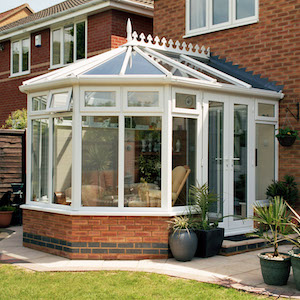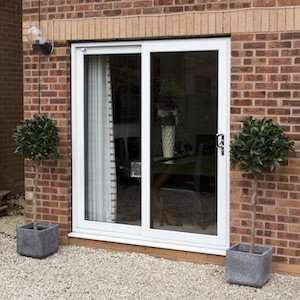What's The Most Creative Thing Happening With Exterior Doors And Windo…
페이지 정보

본문
The Gatekeepers and Glares: Understanding Exterior Doors and Windows for Your Home
Outside doors and windows are more than simply entranceways and openings; they are the gatekeepers and the glaziers of your home. They stand as the first line of defense against the components, burglars, and energy loss, while all at once framing your view of the world and contributing considerably to your home's visual appeal. Choosing the right exterior windows and doors is a vital investment that affects your home's comfort, security, energy effectiveness, and general value. This post looks into the world of exterior doors and windows, exploring the numerous types, materials, and elements to consider when making these crucial choices for your home.
Exterior Doors: Your Home's Welcoming Hand and Firm Barrier
Exterior doors are essential components of any home, serving both practical and visual purposes. They are the primary points of gain access to, creating an inviting entryway while supplying vital security and insulation. Comprehending the various types of outside doors is the first action in making a notified choice.
Outside doors can be broadly categorized based upon their material and style:
Types of Exterior Doors by Material:
- Wood Doors: Classic and stunning, wood doors use a timeless appeal and can be personalized with different spots and paints. They provide excellent insulation but require regular maintenance to protect them from weather damage, consisting of painting or staining. Hardwood types like oak, mahogany, and maple are popular for their durability and beauty.
- Fiberglass Doors: These doors are known for their durability, energy efficiency, and low maintenance. They can be manufactured to imitate the appearance of wood, offering the visual appeal without the maintenance. Fiberglass is resistant to damages, scratches, and weather condition damage, making them a long-lasting alternative.
- Steel Doors: Steel doors are the most secure alternative, providing remarkable strength and resistance to required entry. They likewise provide exceptional insulation, especially when filled with foam core. Modern steel doors typically include a wood-grain texture for a more enticing look and are typically pre-painted, reducing maintenance.
- Composite Doors: Combining the very best features of different materials, composite doors frequently feature a strong core, a fiberglass or wood veneer, and a long lasting outer skin. They are extremely energy-efficient, protected, and require minimal upkeep, offering a well balanced performance profile.
Types of Exterior Doors by Style:
- Entry Doors: These are the primary front doors developed to make a statement. They can be found in a range of styles, consisting of single doors, double doors, and doors with sidelights or transoms. Entry doors prioritize aesthetics, security, and energy efficiency.
- Outdoor patio Doors: Designed to provide access to patios, decks, or backyards, patio doors are typically larger and include more glass than entry doors. Common types include moving glass doors and hinged french door with side windows french doors with side windows. Patio area doors are selected for their capability to maximize natural light and outdoor views while providing simple gain access to.
- Storm Doors: Installed in front of entry doors, storm doors provide an extra layer of security versus harsh weather condition conditions like rain, snow, and wind. They likewise improve insulation and can supply ventilation with built-in screens.
- Security Doors: Primarily concentrated on safety, security doors are built with enhanced steel or other robust materials and feature improved locking systems. They are created to discourage trespassers and supply optimal defense for your home.
Exterior Windows: Framing Views and Controlling Light

Outside windows are similarly important, serving as websites to natural light, ventilation, and views of the outside world. They play a critical role in regulating your home's temperature, impacting energy consumption and comfort levels. Comprehending the different kinds of windows and their functions is important for choosing the very best alternatives for your requirements.

Like doors, windows can be classified by product and operation style:
Types of Exterior Windows by Material:
- Vinyl Windows: Vinyl windows are a popular option due to their affordability, energy performance, and low maintenance. They are resistant to rot, warping, and fading, and come in a variety of colors and styles. Vinyl windows are an economical and resilient alternative for numerous homes.
- Wood Windows: Wood windows provide classic appeal and exceptional insulation. They can be custom-made and stained or painted to match any design. Nevertheless, wood windows require routine maintenance to prevent rot and decay, specifically in damp climates.
- Aluminum Windows: Known for their strength and toughness, aluminum windows are often used in modern and modern designs. They are low-maintenance and resistant to deterioration. However, aluminum is not as energy-efficient as other products, though thermal breaks can enhance their insulation properties.
- Fiberglass Windows: Fiberglass windows are extremely durable, energy-efficient, and low-maintenance, similar to fiberglass doors. They resist warping, splitting, and fading, and offer outstanding insulation. Fiberglass can mimic the look of wood and is a premium alternative for long-lasting performance.
- Composite Windows: Combining materials like wood fibers and polymers, composite windows use a balance of strength, insulation, and durability. They are resistant to wetness and insects and require minimal upkeep, making them a flexible choice.
Kinds Of Exterior Windows by Operation:
- Double-Hung Windows: A classic and flexible style, double-hung windows have two sashes that move vertically. They offer good ventilation from both the top and bottom and are simple to tidy.
- Casement Windows: Hinged at the side and crank open outward, casement windows use excellent ventilation and a tight seal when closed, enhancing energy efficiency. They offer unblocked views and are frequently coupled with photo windows.
- Awning Windows: Hinged at the leading and open external from the bottom, awning windows are ideal for ventilation even throughout light rain. They are typically placed greater on walls or utilized in basements.
- Moving Windows: Sliding windows have sashes that move horizontally, making them simple to operate and appropriate for areas where external swinging windows are not practical. They use good ventilation and are basic in style.
- Picture Windows: Large, set windows that do closed, image windows are designed to optimize views and natural light. They are extremely energy-efficient due to their lack of operable parts.
- Bay and Bow Windows: These windows project outward from your house, developing a nook and including architectural interest. Bay windows normally have three sections, while bow windows have 4 or more, creating a curved look. They improve views, light, and interior space.
Picking the Right Doors and Windows: Key Considerations
Picking the right outside windows and doors involves considering several crucial elements to ensure they fulfill your requirements and preferences:
- Energy Efficiency: Look for windows and doors with great energy performance scores, such as U-factor (measures heat loss) and Solar Heat Gain Coefficient (SHGC) (procedures solar heat gain). Energy Star licensed products satisfy specific energy effectiveness criteria and can considerably reduce your energy expenses. Double or triple-pane glass, low-E coverings, and insulated frames all add to better energy performance.
- Security: Prioritize security features, especially for entry doors and ground-floor windows. Try to find solid core doors, strengthened frames, multi-point locking systems, and impact-resistant glass. For windows, consider locking systems and enhanced frames.
- Aesthetic appeals: Doors and windows play a substantial role in your home's curb appeal. Pick designs, materials, and colors that complement your home's architectural design and your individual taste. Consider the total look you wish to attain, from traditional to modern-day.
- Spending plan: Set a budget plan for your door and window replacement or installation job. Consider both the initial expense and the long-lasting benefits, such as energy savings and increased home worth. Various materials and designs come at varying cost points.
- Upkeep: Evaluate the maintenance requirements of different products. If you choose low maintenance, fiberglass, vinyl, or steel are outstanding choices. Wood requires more routine maintenance, such as painting or staining.
- Climate: Consider your local environment when picking doors and windows. In harsh climates, focus on weather condition resistance, insulation, and toughness. Coastal locations may need products resistant to salt air and wetness.
Setup and Maintenance for Longevity
Appropriate setup is just as essential as choosing the right windows and doors & windows. Expert installation ensures right fitting, sealing, and operation, making the most of energy performance and avoiding future issues. Improperly set up doors and windows can lead to drafts, leakages, and lowered security.
Routine maintenance is important to extend the life of your outside windows and doors and keep them working optimally. Fundamental upkeep includes:
- Regular Cleaning: Clean windows and door surface areas frequently to get rid of dirt, particles, and mildew. Usage mild soap and water for a lot of materials.
- Lubrication: Lubricate hinges, locks, and tracks on windows and doors to guarantee smooth operation.
- Weather Stripping Inspection: Check weather removing around doors and windows regularly and replace it when it becomes used or harmed to keep airtight seals and energy efficiency.
- Painting/Staining (for Wood): For wood doors and windows, repaint or restain them occasionally to safeguard them from weather damage and maintain their appearance.
The Lasting Benefits of Quality Doors and Windows
Buying quality outside doors and windows provides a wide range of advantages that extend beyond aesthetic appeals:
- Enhanced Energy Efficiency and Lower Energy Bills: Energy-efficient doors and windows minimize heat loss in winter and heat gain in summer, causing considerable energy savings and lower energy bills.
- Improved Home Security: Strong, protected doors and windows provide comfort and protect your home and household from intruders.
- Increased Home Value and Curb Appeal: New, trendy doors and windows can considerably enhance your home's curb appeal and increase its overall market price.
- Improved Comfort and Noise Reduction: Well-insulated doors and windows contribute to a more comfortable indoor environment by lowering drafts and reducing outside sound.
Conclusion:
Exterior doors and windows are critical financial investments that affect every element of your home. By understanding the different types, products, and aspects to consider, you can make informed decisions that enhance your home's appeal, security, energy effectiveness, and comfort for many years to come. Picking carefully and maintaining them properly guarantees these vital elements serve their function successfully, functioning as both inviting entrances and unfaltering guardians of your living space.
Often Asked Questions (FAQs) about Exterior Doors and Windows
Q1: How long do exterior windows and doors usually last?A: The lifespan of exterior doors and windows varies depending upon the material and quality of installation. Usually, wood windows can last 20-30 years, vinyl windows 20-40 years, fiberglass windows 30-50 years, and steel doors 30+ years. Appropriate maintenance can extend their life expectancy.
Q2: What are the signs that I need to replace my exterior doors and windows?A: Common signs consist of:* Drafts around windows and doors.* Condensation in between window panes.* Difficulty opening or closing windows and doors.* Visible rot or damage to frames and sashes.* Increasing energy bills.* Outdated look.
Q3: Is it much better to replace all my windows and doors at the same time, or can I do it in stages?A: Replacing all windows and doors at the same time can be more economical in regards to labor and possible bulk discount rates. Nevertheless, you can replace them in phases based upon your spending plan and top priority. Focus on the most bothersome or energy-inefficient units first.
Q4: Should I choose double-pane or triple-pane windows for energy efficiency?A: Triple-pane windows are typically more energy-efficient than double-pane windows, specifically in cooler climates, offering much better insulation and noise decrease. Nevertheless, they are also more expensive. Double-pane windows with low-E finishings are frequently an excellent balance of performance and expense. Consider your climate and budget plan to make the very best option.
Q5: Can I install exterior windows and doors myself, or should I employ a professional?A: While some skilled DIYers might attempt window & door or door installation, it is typically advised to work with expert installers. Proper setup is essential for efficiency, energy effectiveness, and service warranty credibility. Experts have the expertise and tools to ensure right installation and sealing, preventing future problems.
Q6: What is the most energy-efficient type of exterior door?A: Fiberglass and steel doors with insulated cores are normally considered the most energy-efficient exterior door options. They use exceptional insulation and airtight seals, decreasing heat loss and gain.
Q7: How can I enhance the security of my existing outside windows and doors without changing them?A: You can improve security by:* Upgrading door locks to high-security choices.* Installing a reinforced strike plate on door frames.* Adding a peephole or wise doorbell.* Using security movie on windows to make them more shatter-resistant.* Installing window locks or security bars.
Q8: What are low-E coatings on windows, and why are they essential?A: Low-E (low emissivity) coatings are thin, transparent finishes applied to window glass to minimize heat transfer. They show infrared and UV light, improving energy performance by keeping heat inside in winter and outside in summer season. Low-E coatings likewise help to reduce fading of interior home furnishings.
Q9: How typically should I examine and preserve my outside doors and windows?A: It's advised to inspect your exterior windows and doors at least two times a year, preferably in the spring and fall, and after severe weather condition occasions. Regular cleansing and lubrication should be done more often, as needed.
Q10: Are there any federal government incentives or rebates for setting up energy-efficient windows and doors?A: Yes, in lots of regions, there are federal government rewards, tax credits, or refunds offered for house owners who install energy-efficient windows and doors. Inspect with your regional and nationwide energy performance programs for present offerings and eligibility requirements.
- 이전글15 Bizarre Hobbies That'll Make You Smarter At Newborn Bedside Cot 25.03.31
- 다음글You'll Never Be Able To Figure Out This Over Island Extractor Fan's Secrets 25.03.31
댓글목록
등록된 댓글이 없습니다.





 스포츠토토 유용한 정보
스포츠토토 유용한 정보  가상경기 배팅게임
가상경기 배팅게임 